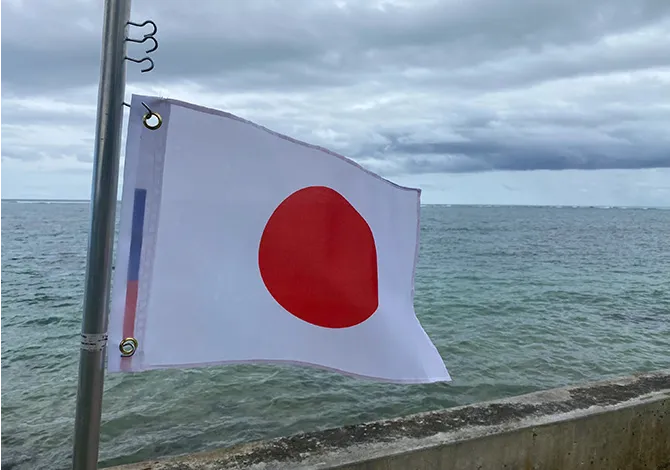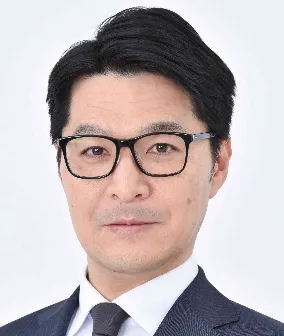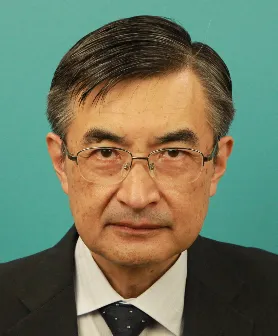-
CENTRES
Progammes & Centres
Location
As a trusted bellwether in the international arena, Japan must vigorously promote the FOIP and FOIO to forge a consensus with a large circle of states

A quiet but highly significant evolution in Japan’s strategic messaging has occurred in recent years. Tokyo’s diplomats now speak of a ‘free and open international order based on the rule of law’ rather than the more familiar ‘free and open Indo-Pacific (FOIP)’. Indeed, the ‘free and open international order’ or ‘FOIO’, as we call it, is often iterated by Japan’s leaders and diplomats and seems to have overshadowed the FOIP that Japan has authored and advocated since 2016.
A few recent examples of this include Japan’s revised National Security Strategy that was issued in December 2022. It specifies, as Japan’s national interests, that ‘Japan will maintain and develop a free and open international order, especially in the Indo-Pacific region where Japan is situated’. The policy speech by Prime Minister Fumio Kishida at the Diet in January 2023 also emphasised a ‘strong political will to uphold the free and open international order based on the rule of law’ that Japan would convey on the occasion of the Group of Seven (G7) Hiroshima Summit. In both cases, the FOIP’s mention only came after the verbose nomenclature.
The policy speech by Prime Minister Fumio Kishida at the Diet in January 2023 also emphasised a ‘strong political will to uphold the free and open international order based on the rule of law’ that Japan would convey on the occasion of the Group of Seven (G7) Hiroshima Summit.
Even as Kishida launched Japan’s ‘New Plan for a FOIP’ in New Delhi in March 2023, he conspicuously mentioned the FOIO—albeit toward the end. But its presence underscored Kishida’s point that ‘Japan and India have a great responsibility for maintaining and strengthening 'a free and open international order based on the rule of law'.
How should we grasp the nexus between the ‘old’ FOIP and the ‘new’ FOIO? What is the logic behind Tokyo’s strategic communication? While the shift in rhetoric is more understandable if contextualised with what Japan describes as the ‘turning point in history’ generated by the Russia-Ukraine war, it nevertheless was engendered by changes in Tokyo and the way it sees the world. This article provides answers to these and other questions and tells us why the shift is important. It also explains what the evolution of Japan’s FOIP to FOIO strategy messaging means for great power rivalry and outreach beyond the Indo-Pacific.
Since the late Prime Minister Shinzo Abe advanced his ‘Confluence of the Two Seas’ idea in New Delhi in 2007, Japan has endeavoured to become an Indo-Pacific thought leader and normative powerhouse. Japan’s FOIP, officially launched in August 2016, emphasises the values of freedom and openness and illustrates the culmination of Tokyo’s diplomatic and normative thoughts. As the Indo-Pacific concept gelled to become a ‘geography of strategies’, Japan then tailor-made its grand strategy to fit the bounded Indo-Pacific geography.
What is often overlooked is that in early 2017, Tokyo also introduced the term ‘free and open international order’ (jiyū de hirakareta kokusai chitsujo) to its official discourse. This ‘new’ terminology is, however, a reflection of official and non-official narratives long before the FOIP. For instance, the National Defense Program Guidelines for FY 2011 and beyond, spelt out as its basic principles an objective to ‘prevent threats from emerging (…) to maintain and strengthen a free and open international order (…)’ (emphasis added) already in December 2010.
Whereas the FOIP became Japan’s chief foreign policy initiative, the FOIO, too, has remained a leitmotif in official discourses. In January 2017, then Foreign Minister Kishida wrote in the French Le Figaro newspaper: ‘It is essential that Japan and Europe support a free and open international order (...) by actively collaborating in promoting the rule of law’ (translated by the authors and emphasis added). As another example, in July 2021, then Foreign Minister Toshimitsu Motegi contributed an article to Prensa Libre, a Guatemalan newspaper titled ‘Promoting the maintenance and strengthening of a free and open international order together with the Central American countries’ (translated by the authors and emphasis added). Motegi’s text neither mentioned the ‘FOIP’ nor the ‘Indo-Pacific’, despite Guatemala’s Pacific Ocean coastline.
Japan continued to push its vision of a “free and open international order based on the rule of law”, as noted, in the international arena when Japan assumed the Chair of the G7.
The FOIO gained traction in the 2022-2023 period, often paired with the phrase ‘the rule of lawmeaning the one among nations’. Japan continued to push its vision of a “free and open international order based on the rule of law”, as noted, in the international arena when Japan assumed the Chair of the G7. Yet, in retrospect, rather than being some novel mutation, our research shows that the more universal FOIO idea has consistently informed and supported Tokyo’s region-bound FOIP vision. What has changed is Japan’s strategic messaging emphasis. After chalking up significant successes in preserving the rules-based international order in the Indo-Pacific through FOIP, Tokyo is now ready to engage the entire globe with what it hopes is its universally appealing FOIO vision.
The FOIO’s recent promotion is illustrative of a significant spatial shift in Japan’s strategic messaging. Japan’s FOIO continues its role as the rule-based order’s ‘thought leader’ and the FOIP’s moral guardian. Its power is found in its focus on the essentials of our existence as a community of nations. It emphasises sovereignty and territorial integrity and eschews more controversial themes like human rights and democracy. The FOIO is thus expected to function as the ‘common denominator’ for Japan’s global engagement. While Kishida continues to defend ‘human dignity’, his narrative and stance are accommodating and inclusive in sharp contrast to those of Western liberal leaders. Tokyo’s FOIO messaging is therefore clearly aimed at generating widespread ‘Global South’ support—far beyond the geographic confines of the Indo-Pacific. The result is that many state leaders, including India’s Prime Minister Narendra Modi, have publicly endorsed Japan’s cause.
Despite its promising entrée, the ‘free and open international order based on the rule of law’ comes with certain detractions. It certainly has less audience appeal than the evocative ‘free and open Indo-Pacific’, which Abe waxed: ‘When I hear the words “free and open Indo-Pacific,” what comes back to my mind is such an expansive seascape’. Japan’s new rallying cry certainly does little to evoke such emotion.
The FOIO’s recent promotion is illustrative of a significant spatial shift in Japan’s strategic messaging. Japan’s FOIO continues its role as the rule-based order’s ‘thought leader’ and the FOIP’s moral guardian.
The authors, therefore, propose the straightforward and catchier ‘free and open international order’ or simply ‘FOIO’ (instead of the mouthful ‘FOIOBRL’ or ‘FOIO-BRL’) as Japan’s new trademark acronym. Naturally, the FOIO is underpinned by the international rule of law and related legal principles that Japan always points to; those universally agreed to by the world’s states in agreements, declarations, and outlooks—in theory if not in practice.
Japan’s leaders and policymakers have constructed a powerful ‘strategic thought arsenal’ that can be used flexibly to meet the world’s dynamic security challenges. At the global level, the FOIO’s emphasis will allow Japan to smoothly interact with regions not covered by the Indo-Pacific geography and assert the fundamental principles of international law. Japan’s Foreign Minister rightly emphasised the FOIO in his message to Guatemala. This was an eloquent precursor to Japan’s current messaging, as Venezuelan revisionism against neighbouring Guyana, among others, demonstrates the rectitude of Japan’s FOIO approach.
The FOIO’s utility and power are, nonetheless, inseparable from its more famous sibling, the FOIP. The FOIP and FOIO can find a powerful synergy when used deftly by Japan’s leaders. Despite the FOIO’s global appeal, current and future administrations must not waste the diplomatic and strategic successes realised by Tokyo’s Indo-Pacific initiative. Given the security challenges, the Indo-Pacific still matters.
As Kishida and US President Joe Biden declared, the Indo-Pacific region faces ‘mounting strategic challenges to the rules-based international order’. Japan, together with India and its Quad partners, should neither abandon the FOIP ―of which Japan is the author—nor the FOIP agenda and geography. The ‘Indo-Pacific’ has become a synonym for an alarm against China’s revisionism. It symbolises the legitimate counteractions of largely rimland states from the United Kingdom (UK) to India to Japan, despite being dismissed as ‘sea foam’ by China’s Communist leadership. It also implicitly highlights the critical location and strategic role played by India: what India does matters greatly in the evolving distributions of power across the globe. Explicit references to the Indo-Pacific underscore this vital fact.
Japan, together with India and its Quad partners, should neither abandon the FOIP ―of which Japan is the author—nor the FOIP agenda and geography.
In sum, Japan’s policymakers should be flexible in juggling various geographies. Tokyo should therefore prioritise and relativise the Indo-Pacific geography, as needed, in the future. It can be used along with other familiar geographical references with a more strategic implication: the ‘Asia-Pacific’, ‘Western Pacific’, and ‘East Asia’—with the flashpoint of Taiwan kept in mind—are some examples. As proof, what we call the ‘Asia-Pacific Quad’ with the Philippines has become an additional layer to the ‘Indo-Pacific Quad’ with India.
Located in a threatening environment, Japan is at the forefront of the mounting challenges. As a trusted bellwether in the international arena, Japan must vigorously promote the FOIP and FOIO to forge a consensus with the large circle of states, in particular, those in the political South—no other country is better positioned than Japan to play this role. This will be beneficial not only to Japan but also to the growingly unstable and unpredictable world.
Kei Hakata is a professor at Seikei University, Japan, teaching international politics and security affairs.
Teruaki Aizawa is an Associate Professor at the National Defense Academy of Japan in Yokosuka, Japan.
Brendon J. Cannon is an Assistant Professor of International Security at Khalifa University of Science and Technology, Abu Dhabi, UAE.
The views expressed above belong to the author(s). ORF research and analyses now available on Telegram! Click here to access our curated content — blogs, longforms and interviews.

Kei Hakata is Professor at Seikei University in Tokyo, Japan. He specialises in international politics and security affairs. His latest book, co-edited with Brendon J. ...
Read More +
Teruaki Aizawa is an Associate Professor at the National Defense Academy of Japan in Yokosuka, Japan. He is a retired Captain of Japan Maritime Self-Defence ...
Read More +
Brendon J. Cannon is Assistant Professor of International Security at Khalifa University in Abu Dhabi. His research is at the nexus of international relations security ...
Read More +